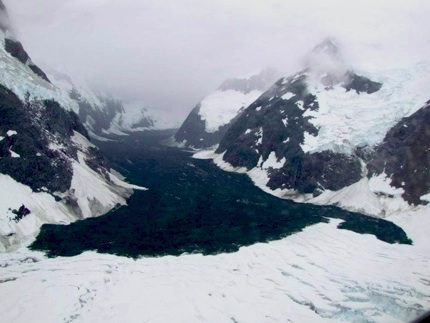20 February 2014
Breaking news: a very large landslide in Alaska on Sunday
Posted by Dave Petley
Detecting very large landslides with seismic data
Update: this landslide has now been found – it is on the flanks of Mount La Perouse. Details in this blog post.
Regular readers will know that Colin Stark and Goran Ekstrom have developed a technique to use the global seismic network to detect very large landslides – this is published in Ekstrom and Stark (2012) and was accompanied by a commentary that I wrote (Petley 2012). In 2012 they detected the Mount Lituya rock avalanche in Alaska (shown in the image below), and I was extremely fortunate to be able to feature it on this blog before anyone in Alaska was aware of it. They also used this technique to identify the Seti River landslide in Nepal, and various other landslides as well.

The Mount Lituya landslide on 2012. Sunday’s landslide is likely to be even larger! Source: http://www.nationalparkstraveler.com/2012/07/massive-landslide-coats-glacier-bay-national-parks-johns-hopkins-glacier-chocolate-frosting10200#comment-41027
A new, very large landslide in Alaska
Using this technique, Colin and Goran, together with Clement Hibert, have detected a new, very large landslide in the Alaska panhandle. Clearly this post is with their kind agreement and using information that they have supplied. The landslide occurred on 16th February 2014 (i.e. on Sunday) at 14:24 UT (i.e. at 05:24 local time). Using the LFH techniques in Ekstrom and Stark (2013), the approximate parameters of the landslide can be deduced. This suggests that the landslide had the following characteristics:
- Maximum force Fmax (from single force inversion): ~ 1.25 10^11 N
- Direction: ~ to the ENE
- Using the rough scaling “law” in Ekström & Stark (2013) for mass from max force, mass ~6.8*10^10kg = 68 million tonnes.
These parameters should be considered to be preliminary at this stage, but if confirmed using satellite imagery this will be the largest natural landslide since 2010, and the largest landslide anywhere in the world since the Bingham Canyon mine event.
For reference, the Lituya Mountain landslide (which so dramatic that it was even featured in the Daily Mail!) had a mass of about 20 million tonnes. The seismic data suggests that this landslide may also have run out over ice, so it is likely to be a truly impressive event once it is located.
Update: this landslide has now been found – it is on the flanks of Mount La Perouse. Details in this blog post.
References
Ekstrom, G., & Stark, C. (2013). Simple Scaling of Catastrophic Landslide Dynamics. Science, 339 (6126), 1416-1419 DOI: 10.1126/science.1232887
Petley, D. (2013). Characterizing Giant Landslides. Science, 339 (6126), 1395-1396 DOI: 10.1126/science.1236165


 Dave Petley is the Vice-Chancellor of the University of Hull in the United Kingdom. His blog provides commentary and analysis of landslide events occurring worldwide, including the landslides themselves, latest research, and conferences and meetings.
Dave Petley is the Vice-Chancellor of the University of Hull in the United Kingdom. His blog provides commentary and analysis of landslide events occurring worldwide, including the landslides themselves, latest research, and conferences and meetings.
I am eager to learn more about this, as I live in northern SE Alaska where these big slides seem to happen frequently. Is there any indication about a more specific area? We’ve had plenty of clear weather lately so maybe it can be seen in satellite imagery or with a narrower search area one of our local pilots could look for it, as they did in 2012.